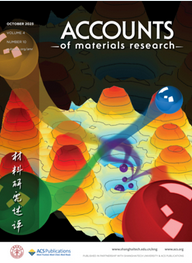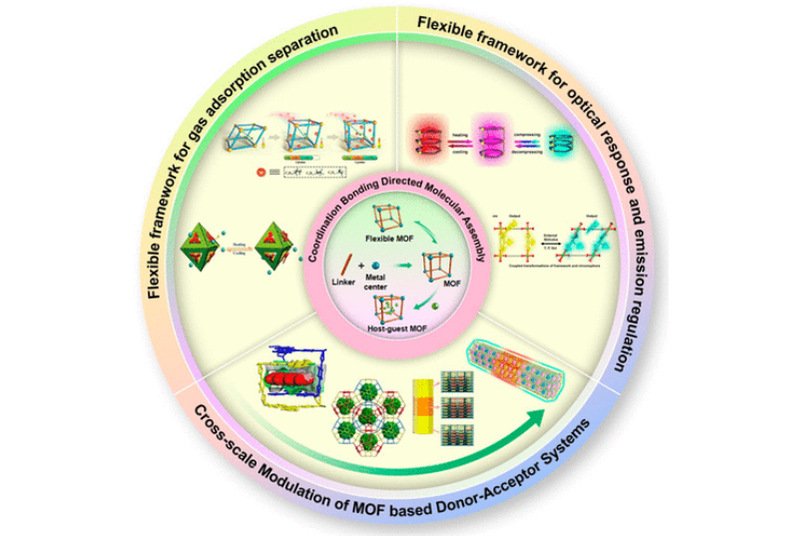
论文题目:Coordination Bonding Directed Molecular Assembly toward Functional Metal–Organic Frameworks: From Structural Regulation to Properties Modulation
论文作者:Mei-Hui Yu, Lin Geng, Ze Chang*, Xian-He Bu*
发表期刊:Acc. Mater. Res.2023, 4, 10, 839–853

Abstract
For the targeted construction of functional materials, the molecule is one of the fundamental building blocks, for which directed assembly will directly affect the structures and properties of materials. As a novel type of functional material, metal–organic frameworks (MOFs) constructed on the basis of the linkage of inorganic and organic building blocks through coordination bonding have been well-developed as promising molecule-based materials. The versatile coordination bonding combined with the diverse forms of building blocks could result in MOFs featuring highly tunable structures and properties. On the basis of our continuous investigation of MOFs, we found that there are several main factors affecting the function-oriented construction of MOF materials: (i) The well-established coordination modes of the metal ions/metal clusters with specific coordinating groups could facilitate a predictable linkage between the inorganic and organic moieties. (ii) The organic molecules featuring distinctive kinds and numbers of coordinating groups promoted the diversity of the assembly product from the perspective of structures and properties. (iii) The intermolecular interactions could provide instructive principles on the structural regulation to properties modulation.
In this Account, we focus on exhibiting the progress on the structural regulation and property modulation of functional MOF materials. Starting from the tuning of the framework structure through the modulation of the coordinative molecular building block, the relationship between structural diversity/structural flexibility and molecular assembly is discussed. Meanwhile, it is also worth paying attention to the dynamic behavior of flexible framework structures under external stimuli on the adsorption separation and optical modulation properties. Moreover, by regulating the synergy of molecular assembly and host–guest interactions, the construction of donor–acceptor (D–A) systems based on host–guest framework has been developed and demonstrated remarkable performance regulation capabilities. It is expected that this Account will provide the principles for structural regulation and properties modulation on the related research of coordination bonding directed molecule assembly systems toward functional MOF materials.
